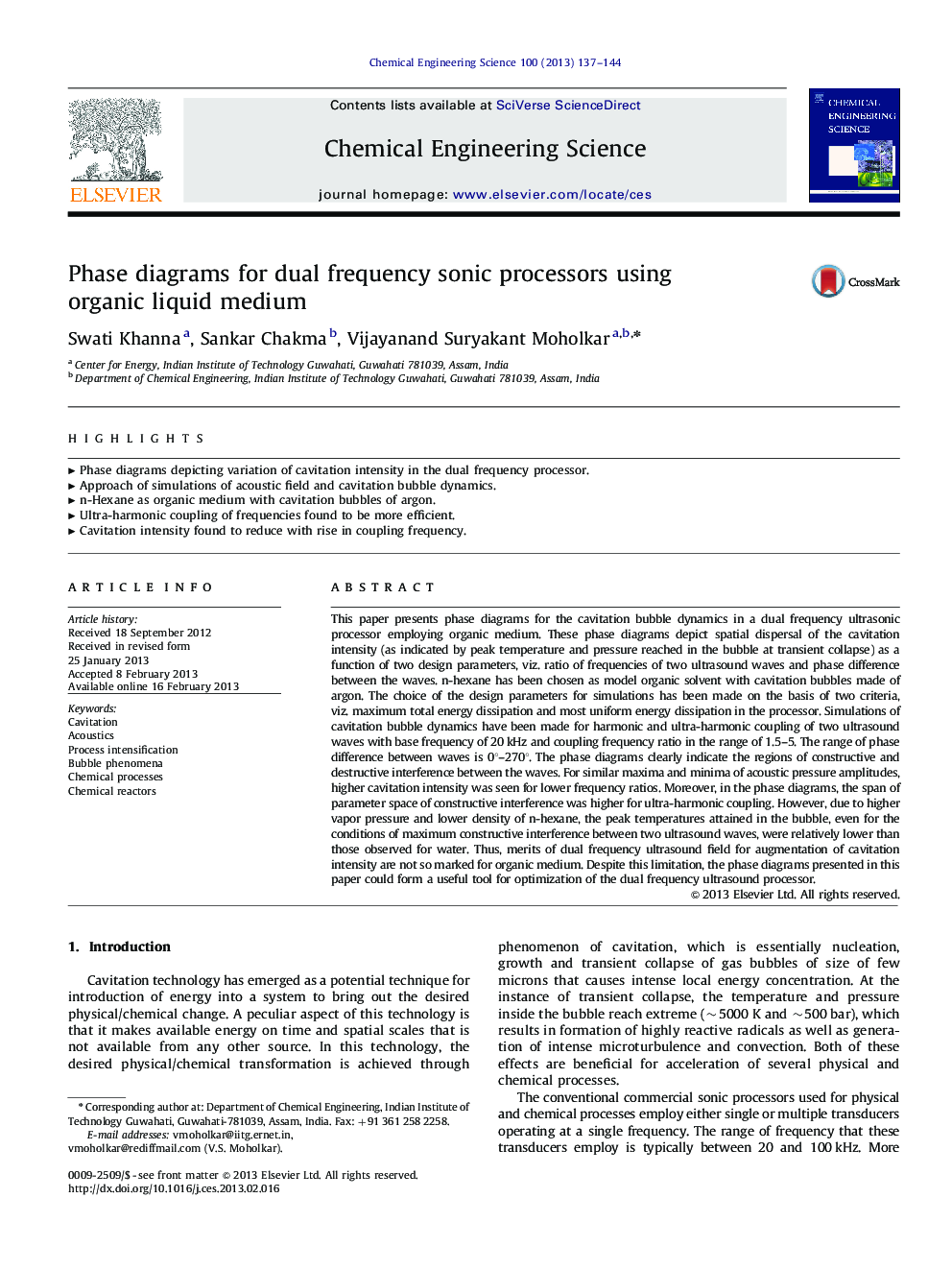| کد مقاله | کد نشریه | سال انتشار | مقاله انگلیسی | نسخه تمام متن |
|---|---|---|---|---|
| 155059 | 456883 | 2013 | 8 صفحه PDF | دانلود رایگان |

This paper presents phase diagrams for the cavitation bubble dynamics in a dual frequency ultrasonic processor employing organic medium. These phase diagrams depict spatial dispersal of the cavitation intensity (as indicated by peak temperature and pressure reached in the bubble at transient collapse) as a function of two design parameters, viz. ratio of frequencies of two ultrasound waves and phase difference between the waves. n-hexane has been chosen as model organic solvent with cavitation bubbles made of argon. The choice of the design parameters for simulations has been made on the basis of two criteria, viz. maximum total energy dissipation and most uniform energy dissipation in the processor. Simulations of cavitation bubble dynamics have been made for harmonic and ultra-harmonic coupling of two ultrasound waves with base frequency of 20 kHz and coupling frequency ratio in the range of 1.5–5. The range of phase difference between waves is 0°–270°. The phase diagrams clearly indicate the regions of constructive and destructive interference between the waves. For similar maxima and minima of acoustic pressure amplitudes, higher cavitation intensity was seen for lower frequency ratios. Moreover, in the phase diagrams, the span of parameter space of constructive interference was higher for ultra-harmonic coupling. However, due to higher vapor pressure and lower density of n-hexane, the peak temperatures attained in the bubble, even for the conditions of maximum constructive interference between two ultrasound waves, were relatively lower than those observed for water. Thus, merits of dual frequency ultrasound field for augmentation of cavitation intensity are not so marked for organic medium. Despite this limitation, the phase diagrams presented in this paper could form a useful tool for optimization of the dual frequency ultrasound processor.
► Phase diagrams depicting variation of cavitation intensity in the dual frequency processor.
► Approach of simulations of acoustic field and cavitation bubble dynamics.
► n-Hexane as organic medium with cavitation bubbles of argon.
► Ultra-harmonic coupling of frequencies found to be more efficient.
► Cavitation intensity found to reduce with rise in coupling frequency.
Journal: Chemical Engineering Science - Volume 100, 30 August 2013, Pages 137–144